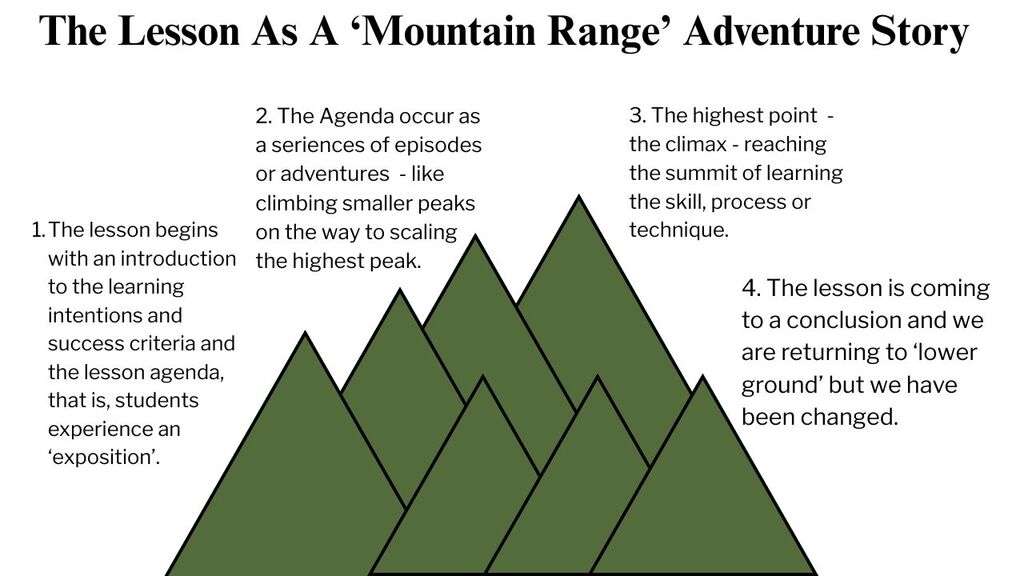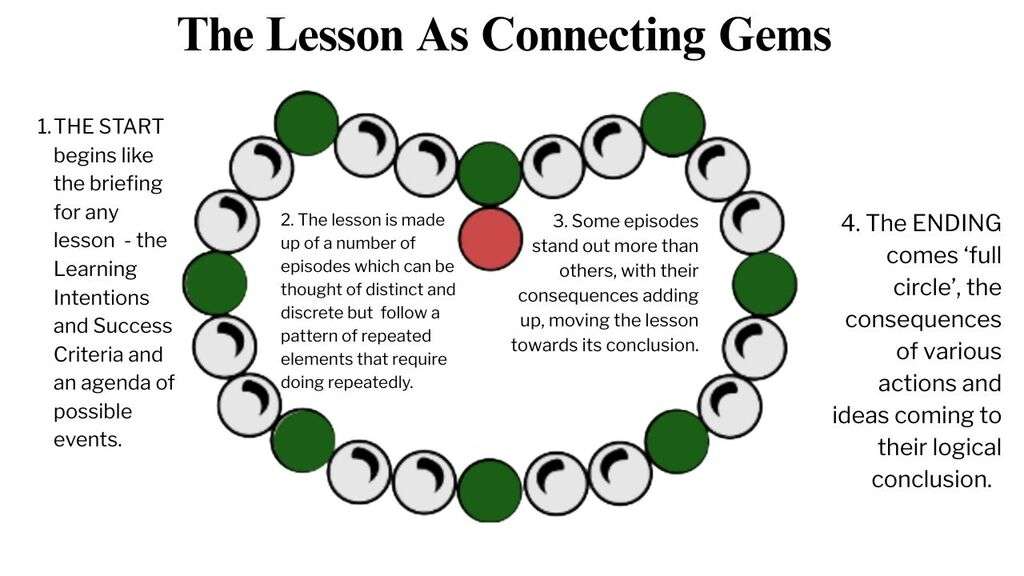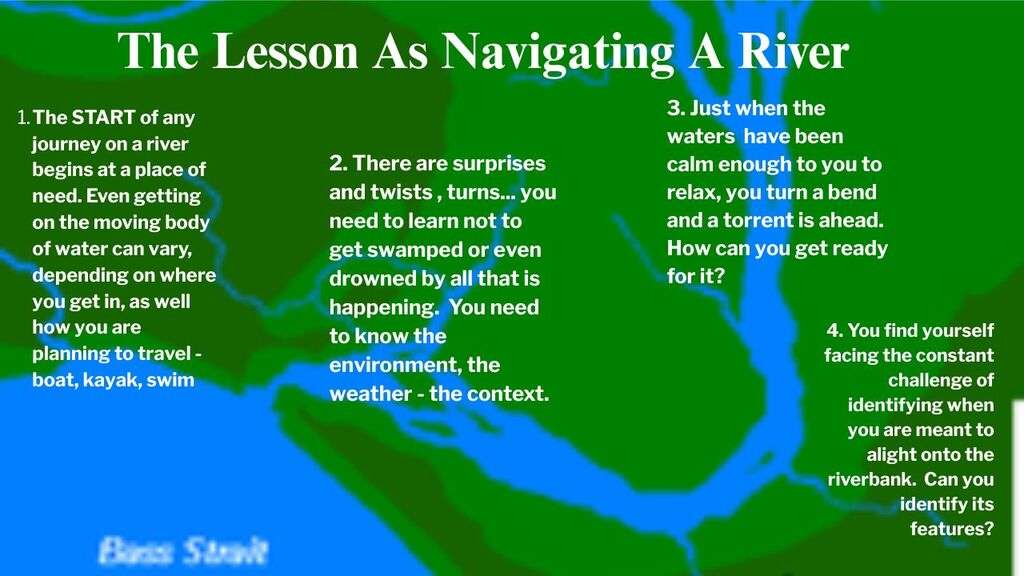This is where, as the cliche says, the rubber hits the road because dramatic play is nothing if it does not give rise to rigorous and productive teaching and learning experiences that sustains your professional motivation to meet classroom challenges.
Use, adapt and personalise
Feel free to download and adapt the units through which I demonstrate my use of dramatic play for use in your own context. In fact, I deliberately build into the lesson plans ways of adapting them as a core part of remaining ‘sane’ as a teacher. Who ever imagined that ‘one-offs’ was our aim in resourcing classrooms? Instead, I’m sharing with you ideas, strategies and methods that I’ve implement throughout my teaching career. If I have one regret it is that I did not hold onto plans for longer, so I might share their purpose and relative merits with colleagues and my school community. However, I’m getting ahead of myself. If you have trouble downloading, or you have questions about the units I offer, feel free to email me on [email protected]
Let me also say from the outset that the units are not ‘interventionist’ type instruction for the English class. Rather, they are a response to the controversy raging around me about the writing of ‘set’ lessons such as those offered on ARC for Victorian teachers and by Ochre for Catholic Education.
I agree with the creation of banks of lessons
I welcome the creation of banks of lessons by curriculum authorities. I view them as putting into practice the ten high impact teaching strategies (HITS) and more. Most notably, my reading of the collection of lessons makes me thankful for the expertise of colleagues to model ‘structured lessons’ and ‘worked examples’. By implication, the lessons show the detailed work required to thoughtfully develop curricula.
Indeed, reading and studying the ARC and Ochre units makes me feel more confident to deal with the specific needs of my students. They give me a point of reference for ensuring how my individualised program of work might enable students to meet mandated learning outcomes. So, again, my units are unremarkable as they show you how I adapted a set sequence. And, as the ARC and Orche lesson plays are part of the ‘creative common’, I offer what I create back into the same space.
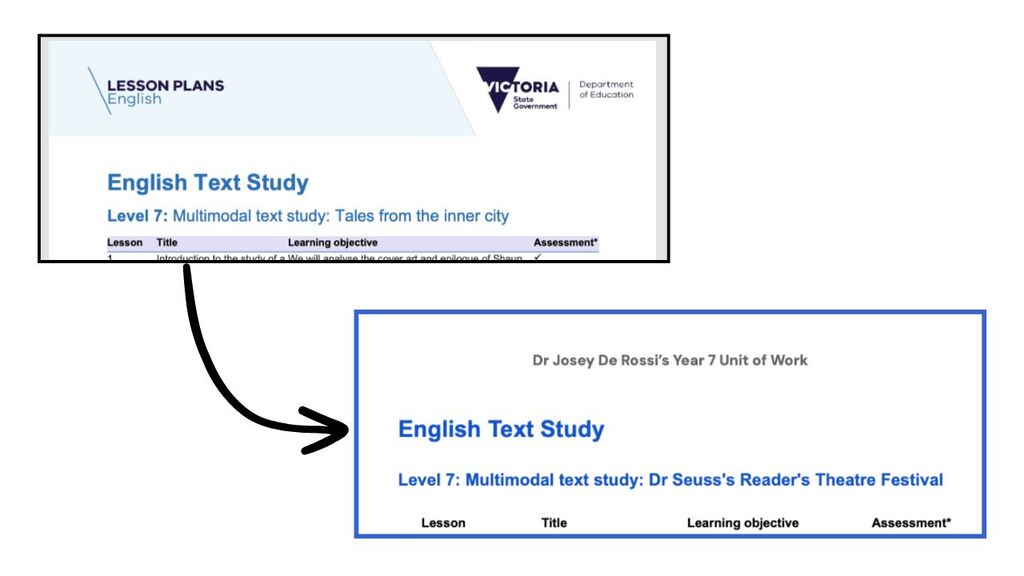
I’m a member of the Curriculum Writers Association Australia
My third declaration in declaring my beliefs and values is to bring to your attention my work with Curriculum Writers Association Australia.
I joined CWAA from its foundation in 2023 because I believed it to be an important forum in which I could have on-going discussions about how technologies and policies impacted how I viewed myself as a curriculum writer. Since then, I’ve discovered it to be a robust organisation that looks at the many overlapping issues between individual and public ownership of education content creation. I admire its presentation of ’round-table’ discussions, along with its Scholars’ Circle (educators with doctorates) and AI Committee. I am currently a member of the Scholars’ Circle who are embarking on helping to draft CWAA’s manifesto.
Above all, CWAA signals the fact that technology has created a massive paradox for educators: on the one hand it has given them 24/4 access to information and tools for content creation (subject knowledge and other educational topics on steroids) while simultaneously risking the teacher’s and student’s human capacity to achieve ‘deep learning’. ‘Cognitive load’ and ‘cognitive offloading’ are now everyday terms.
Through following John Hattie’s work (e.g. Visible Learning and the Science of How We Learn, 2013) and educational historians like Professor Norm Friesen, I accept that these contradictions and controversies around ‘edtech’ have, at least, a twenty-five-year history. And although, difficult to easily summarise, the founding committee members of CWAA have set up the means for a public airing of issues under in a rapidly changing environment, not the least evident via the incorporation of AI into the classroom.
Seven iconic units, infinite variations
Consequently, my goal in responding to the current educational contexts is to bring my decades of apply dramatic play in teaching and learning experiences to bear in three ways
- Strengthen oral language literacy skills through enabling students to imaginatively and consistently practice phonological awareness and word fluency;
- Confront the emotional dimensions of student motivation and well-being as a valuable pretext to all classroom learning; and
- Proactively signpost metacognitive methodologies and brain-based cognitive strategies that inform students on how to be academically successful.
Dramatic Play In Practice
This Year 6 Unit of Work is based on Leo Tolstoy’s short story of Three Questions. The purpose of the unit is not only to study the narrative but to play with the short story and fable forms. Ideas linked to transformation are considered from the setting up of specific areas in the classroom to changing the story from prose to a dramatised play script.
The rigour of what is involved in asking and answering questions cannot be taken for granted. Students use dramatic play to physically tackle the contexts for asking questions, as well as the responsibility for finding appropriate responses. From the slip-sliding of Q&As to the effort required for going on a quest in search of the truth, something always emerges that sparks another thought, another question and another journey towards a possible answer.
The American children’s author, illustrator, animator, and cartoonist Theodor Geisel wrote and illustrated more than 60 books under the pen name Dr. Seuss. Like Lewis Carroll, another author with an unusual imagination, Geisel had attended Oxford University, from where he received the ‘Dr’ part to his name when he completed his PhD in English Literature.
I mention this fact because of the way that his books have always allowed me to have extraordinarily deep conversations with young people who seem to understand his work even better than I did. This Year 7 Unit of Work is dedicated to them and to the extraordinary facility in the English language for word play, create tongue-twists and generally blur the separation for the human voice to create music as well as linguistic meaning.
Eternal Inka is a novel by novelist Clare Rose Trevelyan showing what it means to build relationships as a young person when the normal supports of family and friends are not there for you. But rather than a pessimistic story, Inka’s narrative is the basis for a Year 8 Unit of Work to be built on heroism and adventure.
Clare Trevelyan’s style is highly emblematic and her pastiche paintings reveal the struggle for her main character to belong. We see Inka living on the fictional island of Habadash. It is a world in which silk moths abound and where girls are trained to be weavers and only boys are allowed to be artists. The problem is, Inka doesn’t particularly like weaving (though she’s good at it) and she doesn’t know how to get into the only School of Art in the capital city of Thyme.
The novel is in the form of a personal journal. However, Inka does not only put her words into the journal, but also her poetry, music and paintings. In doing so, she juggles the forms to try to see which tells more of her emotions, which says more to her about her thoughts and which allows to find out where she really belongs.
A Year 8 play study of a comic drama based on a forgotten satirical masterpiece of 19th Century Australian comedy. Australian Felix or, Harlequin Laughing Jackass and the Magic Bat was written for the 1873 Victoria versus England cricket match headed by the great English Captain Grace.
The comedy looks at the antics of ‘Young Australia’ (a boy called Felix), who has a reputation for not respecting elders and always wanting to joke around. His counterpart Young Victoria is presented as equally boisterous On the serious side, the comedy also pokes fun at the Australian boozing and gambling culture.
The storyline is a convoluted and crazy race to beat the clock to prevent everything in Melbourne turning into the dull and grey world of ‘old England’.
The comedy, thus, invites an extraordinary analysis of Australia’s sporting culture.
The National Library of Australia holds digitised copies of Australian newspapers from 1803 onwards. One might argue, then, that each digitigised page, containing numerous articles, advertisements and illustrations, transports the reader to a specific moment in time through which a reader receives a glimpse of how a past event helped build our contemporary culture.
Arguably, amongst the most important happenings the newspapers show are the many times settlers around the continent watched First Nation corroborees. This Year 9 Unit of Work revolves around one article that appeared in the Perth Gazette and Western Australian Journal on 16 March 1833. Entitled “NATIVE CORROBERY AT PERTH”, it reports how the Noongar leader, Yagan, brought together his own tribe of Swan Valley people with those from ‘King George Sound’, now known as Albany, and requested the presence of the settlers to attend the First Nations song and dance.
The unit explores both the skills of critical and creative thinking in reading information texts. Students are asked to research the audience watching the corroborree (as the report says that everyone, including the Governor and ladies of the colony were present). They are then called on to turn their findings into a monologue, bring to life the viewpoint of the settler.
We know that Yagan is hunted down and killed later in that same year of 1833, so what can we learn about how his generosity of spirit was received that evening in March, down by the Swan River and where today the Governor’s residence now stands on St George’s Terrace. Could something else have developed other than the racism and intolerance that occurred? What makes the difference for anyone viewing cultural practices that they don’t understand?
Using materials from Australians Together as well as information from Bangarra Dance Company’s ‘Knowledge Ground’ , what can we change about the way we view First Nation’s culture in order to appreciate the full value of the corroboree in indigenous cultures?
A Year 9 Unit that looks at storytelling to shed light on school yards, sports fields and other school locations that educate us about ourselves. The unit uses song lyrics and poems as stimuli to draw out the depth and breadth of experiences in which high school shapes future lives.
An important ‘sub-strata’ is the existence of the virtual spaces that make up school experiences even as the physical environment and in person events require attention. Tic toc clips punctuate the commentary telling their own stories.
This Year 10 Unit is a play study of a classic Australian play, Betty Roland’s Touch of Silk. A much overlooked work of extraordinary insight, it tells the story of a returned soldier from WW1 who is suffering the then unnamed condition of post-traumatic stress.
Set in a small country town, the drama centres around the ex-soldier’s French wife, who he brings home with him after his experiences on the killing fields of the Somme.
The production was first staged in 1928 at the Playhouse Theatre, Melbourne between 5-8 November. Ironically, the theatre was torn down to make way for the construction of Melbourne’s Arts Centre and Precinct.
The play is an imaginative modelling of social realistic drama on which TV dramas and film were subsequently developed.
Unit Checklist
What you can expect, regardless of what unit you might be interested in downloading? Here are the ways I infuse lessons with dramatic play. You’ll notice, I’m sure, that many features are very much like the standard lesson form which are outlined by the ARC and Ochre Lessons.
I differ, however, when aligning learning outcomes due to the fact that I use the term strand to facilitate my reading them as ‘progress maps’. Consequently, this has a bearing on how I begin to consider planning ‘differentiated’ tasks within each lesson
Alignment To Strands & Sub-strands As ‘Progress Maps’
The seven units reflect my own teaching in Melbourne, Victoria and its implementation of Victorian Curriculum 2.0 content descriptions. However, rather than just name the content descriptions for the year in which I am teaching the unit, I indicate learning outcomes as a ‘progress map’. For instance, a Year 7 unit will show content descriptions from years 6, 7 and 8. From this, I am able to view my unit plans as means of identifying scaffolding for differentiation and identifying prior knowledge. (Yes, there will be classes in which students are more than one level in underachieving in their year group – I’ll come to that point within the context of my ‘progress map’ approach too). Similarly, the ‘progress map’ allows me to identify the scope of evaluation when I create rubrics for assessing student achievement.
SPECIAL NOTE:
It is in this area of viewing and applying a progress map that I have been refining with Nick Rose from CWAA in looking at how AI can be a ‘progress map assistant’ in personalising the application of content descriptor elaboration in respons to student needs.
RELATED TERMS:
Content descriptors, content elaborations, differentiation, prior knowledge, rubrics
Explicit Alignment With Foundational, Learning Area, Capabilities and Curriculum Priorities
I am mindful that curriculum design is a multi-layered task which, in the case of VTLM 2.0 is outline in the concentric circle diagram illustration of foundational, learning area, capabilities and curriculum priorities.
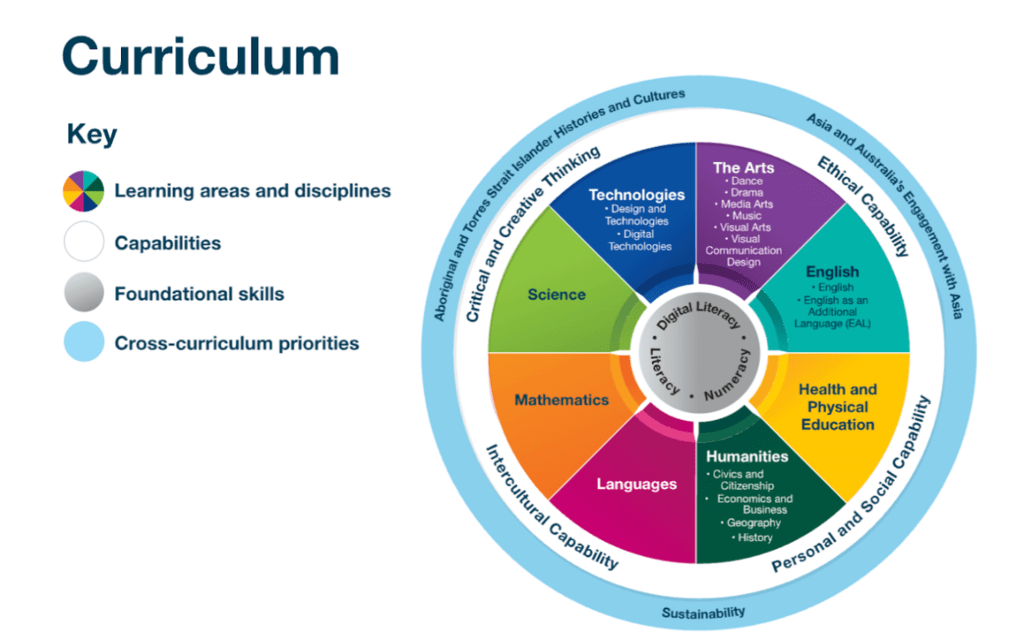
The seven units are term-long units in English that reflect the VTLM 2.0:
- Foundational literacy achieved via English Learning Outcomes.
- The units show the explicit teaching of Critical and Creative Thinking (and other Capabilities).
- The units show my work in explicitly teaching of Aboriginal and Torres Strait Islander Histories and Cultures.
Relationship To Other Learning Areas
Currently, I teach Core Literacy (a school specific literacy intervention program), Humanities, as well as English, However, I have had a long history of teaching drama in Western Australia (1976 – 2009) where I also wrote drama curriculum from K-12 classroom. Today, I now far more interested in the more relational nature of developing literacy and thinking skills. Nonetheless, I will indicate relationships between my three areas of expertise of English, Drama and History where it is relevant. In fact, I believe that when done explicitly, the similarities and difference of subject contexts strength a deep understand of teaching and learning content.
Vocabulary
Every learning experience brings with it some new vocabulary. Ensuring that new terms are well understood is vital for successful outcomes to ensue.
Learning Intentions and Success Criteria
This is a well-proven methodology for students to achieve ownership of their learning. I am resolved to follow the research in their writing and application towards that end. To that end I follow the work of the UK’s Shirley Clarke:
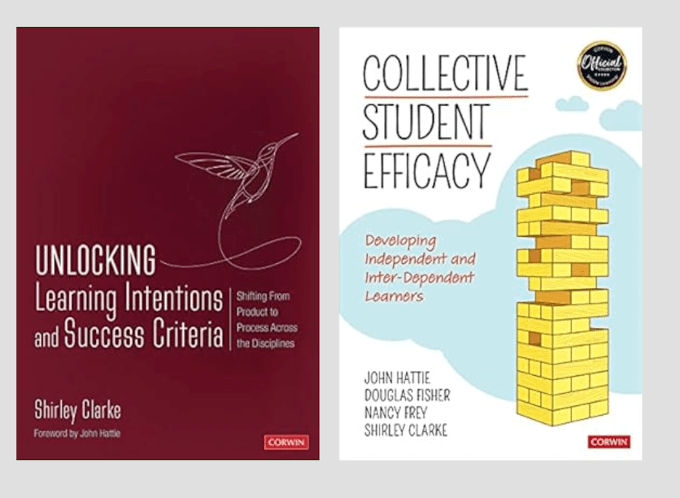
Lesson Structure – Aiming for Engagement
For ‘dramatic play’, I imagine lessons through metaphorical structures that help my students build neural pathways for remembering them. Then, in the act of retrieving them that are more likely to attach their own importance, cultural values and understand to them. The best display of the use of metaphor in teaching I’ve witness are by the cognitive scientists, Professors Barbara Oakley and Terrence Sejnowski, who are renowned for teaching 4million students to LEARN HOW TO LEARN on the Coursera platform. Their five book books have enriched my understanding of teaching and learning since taking their course in 2016. Furthermore, I periodically return to their lessons because I know that the method gets better the more times I experience it.
TEACHING THROUGH METAPHOR
In learning about cognitive science through their engaging ways I’m introduced to zombies, tentacles of octopi, well-constructed walls and more. Indeed, the method arises from the cognitive linguist, George Lakoff, and cognitive philosoper, Mark Johnston in the research findings they make in Metaphors We Live By (1980).
Most importantly, what I have learned from Oakley and Sejnowski is, while the metaphors are consistently applied they not pinned down in any order. Rather, as teachers they engage because they respect that it is the student who is deciphering them and the teacher is putting the metaphor in place in order to emphasise the shape, feeling and consequence of the content being taught.
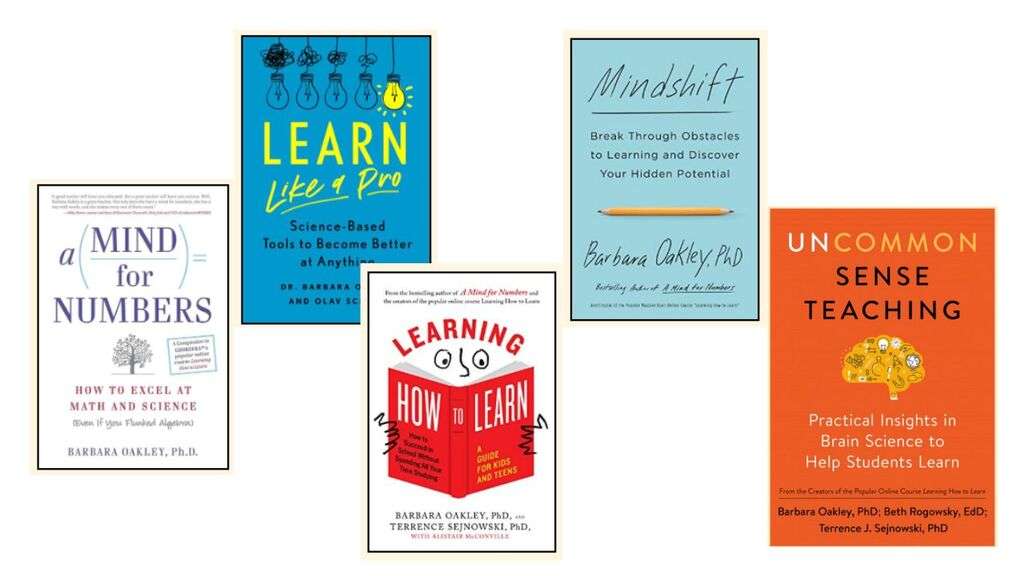
Lesson Structure – Covering Content
Humans have been identified by Jonathan Gottschall as the ‘Storytelling Animal’. So, in this sense there is nothing remarkable about the fact that I like to use storytelling as the main metaphor for applying dramatic play into a unit of work. As a narrative or a combination of stories, each lesson depends my conscious realisation that my students are moving towards demonstrating their negotiation of success criteria. Thus, the ‘story’ lesson structure is the outward representation of an internal change that has taken place. For instance:
